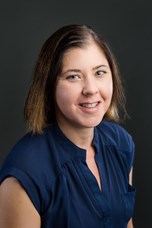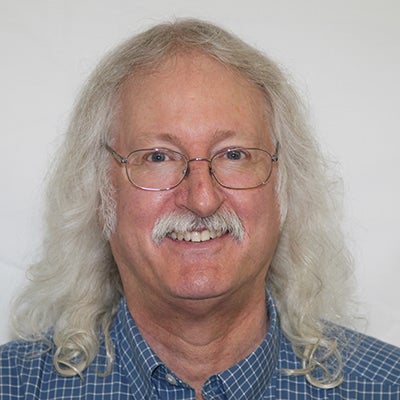Nadja Spitzer

Professor
Dr. Spitzer earned a Ph.D. in Neurobiology and Behavior from Georgia State University in Atlanta, GA, in 2006 and a B.Sc. in Biochemistry from the University of Victoria in British Columbia, Canada. She is currently a professor of biological sciences at Marshall University in Huntington, WV.
Chris Risher

Associate Professor
Dr. Risher received his B.S. in Biological Sciences from the Calhoun Honors College at Clemson University. He then joined the Neuroscience Ph.D. program at the Medical College of Georgia (now Augusta University), where he worked in the labs of Dr. Kristen Harris and Dr. Sergei Kirov. He moved to the Research Triangle area of North Carolina to work as a Postdoctoral Scholar in the lab of Dr. Cagla Eroglu, where he began to study the role of astrocytes in synapse formation. Dr. Risher began his faculty position at Marshall in March 2018. He is the recipient of a 2018 NARSAD Young Investigator Award from the Brain and Behavior Research Foundation. In 2023, he was presented with the Distinguished Alumnus Award by the Graduate School of Augusta University.
Brian Antonsen

Biology Chair & Associate Professor
Dr. Antonsen is Chair of Biological Sciences at Marshall University, with research interests centered on experience induced neural modulation and neuroethology. He serves as administrative lead for the WV-NFNT at Marshall and can answer any general questions about the project.
Haroon Malik

Director of Global Education Initiatives, Associate Professor
Dr. Haroon Malik is an Assistant Professor in Weisberg Department of Computer Science, Marshall University, since fall 2015. Previously, he was a Postdoctoral Fellow in Software Architecture Group (SWAG) at the Cheriton School of Computer Science, University of Waterloo. He worked with Prof. Michael W. Godfrey, Prof. Rick Holt and Prof. Reid Holmes. He earned his Ph.D. working under the supervision of Dr. Ahmed E. Hassan at Software Analysis and Intelligence Lab (SAIL), Queen’s University, Canada.
David Cartwright

Research Associate
Growing up near Dayton, Ohio, David was the oldest of four in a single parent home. His love for math and science propelled him to gain gained both bachelors and master degrees in mechanical engineering from the University of Dayton and is finishing his Ph.D. from West Virginia University in industrial engineering. After working for General Motors throughout high school and college, he pursued his love for teaching. The journey started at the University of Dayton, then Shawnee University, and finally to land home at Marshall University. Currently, he is working in the College of Science, in the Applied Math department, using his skills to educate the next Steve Jobs in the Computer Information Technologies department. He is a passionate educator, life-long learner, and a devoted husband, father, and friend.
Alejandro Nato

Associate Professor
Dr. Nato’s research focuses on computational, statistical, and sequential and structural bioinformatics approaches to study the genetics of complex diseases. He has been involved in developing methods, pipelines, and resources that aid in the identification of candidate genes for complex traits by primarily using pedigree information. Most genetic analysis software has been developed for population-based studies especially in the era of next generation sequencing (NGS). The importance of rare variants in smaller studies on pedigrees has again been recognized. He has developed pedigree-based analysis pipeline software (PBAP) that allows users to analyze dense genetic data in extended families. In addition, he has been involved in developing QC procedures that ensure concordance of data among cohorts of the first phase of Population Architecture using Genomics and Epidemiology (PAGE). He also leads the construction and maintenance of the combined linkage-physical map of the human genome, i.e., Rutgers Maps. He currently leads the analysis of genetic data in familial combined hyperlipidemia, essential hypertension, endometriosis, and other cardiovascular risk factors (including hypercholesterolemia and obesity), using family- and/or population-based strategies. He currently teaches portions of a Biostatistics course for Ph.D. students and gives lectures on Medical Genetics for medical students. He is the Co-Director of the (1) West Virginia IDeA Network of Biomedical Research Excellence (WV-INBRE) Data Science Core and the (2) Marshall University Data Science Core (MU DSC). He is also a member of the (1) Cardiovascular Disease Research Cluster and (2) Obesity and Related Diseases Cluster at the Joan C. Edwards School of Medicine (JCESOM). His knowledge and expertise in bioinformatics/data science (e.g., bulk and single cell RNA-Seq analyses), computational genetics, biostatistics, and genomics with prior wet lab background (molecular biology, molecular genetics), which he applies in his lab and for his colleagues, will be useful for this project.
Sadia Akter

Assistant Professor
Dr. Sadia Akter is an Assistant Professor of Biomedical Sciences at Marshall University School of Medicine. She earned her Ph.D. in Bioinformatics from the University of Missouri-Columbia (MIZZOU), where she also completed postdoctoral training in Bioinformatics and Computational Biology. Before joining Marshall University, Dr. Akter worked as a Scientist at Washington University School of Medicine in St. Louis and the University of Chicago. She is a Fellow of the American Medical Informatics Association (FAMIA) and a Fellow of the NIH’s AIM-AHEAD Research initiative.
Cheyenne Tait

Assistant Professor
Dr. Cheyenne Tait studies neural mechanisms of sensory and decision-making behavior of fruit flies and sea slugs. Her goal is to trace circuits through the small but still intricately complex brains of these and other invertebrates, to understand how decisions are made, and behaviors happen, and can change. Dr. Tait first became interested in animal behavior while watching the natural world, growing up on her parent’s dairy farm. She obtained her bachelor’s in Ecology and Evolutionary Biology from Princeton University as a Questbridge College Match scholar. Later earning her Ph.D. from the University of Notre Dame, she got her start with neurobiology during research internships in Germany and India, learning and applying methods to study fruit odor preference in flies. Most recently, she mapped the brains, neurons, and hormones of nudibranch sea slugs at the University of Massachusetts Amherst, also quantifying their complex courtship behaviors. She is excited to be setting up her lab and recruiting students at Marshall.
Brandon Henderson

Associate Professor
Dr. Henderson is an Associate Professor with Tenure in the Department of Biomedical Sciences at Marshall University’s Joan C. Edwards School of Medicine. He received a BS (with distinction) in Chemistry at The Ohio State University. There he started research, initially as an Analytical Chemist in the lab of Dr. John Olesik. He then received his PhD in Pharmacology at The Ohio State University in the lab of Dr. Dennis McKay. He then continued his development as a NIDA-NIH Postdoctoral Fellow at the California Institute of Technology in the lab of Dr. Henry Lester.
Mary-Louise Risher

Associate Professor
Dr. Louise Risher began her undergraduate studies at Nottingham Trent University, England. She accepted an athletic scholarship in the US and completed her bachelors in Applied Biology at George Mason University. Dr. Risher then went on to work as a research technician and immediately fell in love with Neuroscience. As a graduate student, she trained under the mentorship of two renowned behavioral neuropharmacologists; Dr. Alvin Terry and the late Dr. Jerry Buccafusco at the University of Georgia/Medical College of Georgia. She combined behavioral techniques with innovative cell culture, cellular, and biochemical measures to assess the effects of various clinically approved pharmacological compounds and commercially available pesticides on cognition in a rat model. However, the dissociated neuronal cell cultures lacked the circuitry necessary to make inferences about neuronal network function; therefore, to fill this gap, she joined the laboratory of Dr. Scott Swartzwelder at Duke University for her postdoc. She learned the basics of slice electrophysiology in order to delineate ethanol’s neurotoxic effects on neuronal network function and continued to refine her expertise in rodent models of behavior. Towards the end of her postdoctoral training, she began to pursue the role of astrocyte-driven neuronal dysfunction as a potential mechanism underlying how ethanol can promote synaptic deficits and cognitive impairment. To conduct these investigations, she initiated a collaboration with Dr. Cagla Eroglu (Duke). She determined that repeated intermittent ethanol exposure promotes the upregulation of astrocyte-secreted factors, leading to aberrant synaptic remodeling. She was promoted to Assistant Research Professor at Duke University in 2016. In 2018, she joined the Department of Biomedical Sciences at the Joan C. Edwards School of Medicine at Marshall University. In 2024, she was promoted to Associate Professor (with tenure). Through her recent work the Risher lab has determined that extracellular matrix proteins, the tripartite synapse, and astrocyte signaling, which are critical for the regulation of neuronal activity and subsequent behavior, are profoundly impacted by ethanol exposure in male and female rats and that these deficits persist into adulthood. They currently combine the use of AAVs, fiber photometrics, IHC, high resolution imaging, and cognitive tasks to understand the cell-level functional changes that occur during these behavioral tasks following ethanol exposure.
Michael Norton

Professor
Michael Norton studied Chemistry at Louisiana State University, Shreveport campus, where he obtained a BS degree in 1977. He obtained a Ph.D. in Chemistry from Arizona State Univeristy in 1982 under the direction of William Glaunsinger studying two dimensional mixed metal oxides. He then performed postgraduate research as a National Research Council Postdoctoral Fellow in the Electronic Materials Branch of the Naval Weapons Center at China Lake, California. As an Assistant Professor at the University of Georgia, he developed electrochemical methods for oxide superconductor synthesis, before coming to Marshall in 1991.
Rosalynn Quinones-Fernandez

Associate Professor
Rosalynn Quiñones is an Associate Professor in the Department of Chemistry at Marshall University in Huntington, WV. Prof. Quiñones graduated from the University of Puerto Rico, Humacao Campus with a B.S. in 2002 in Industrial Chemistry with Certification in Management. She worked in the industry for two years before pursuing graduate studies. In 2008, she received a Ph.D. in Chemistry from Duquesne University working with Dr. Ellen S. Gawalt. Her dissertation focused on modifying metal oxides with self-assembled monolayers and polymers for corrosion mitigation in biomaterial applications. As a postdoctoral fellow at the University of Michigan, she conducted research on pharmaceutical drugs and polymers with Dr. Adam J. Matzger. Then, she joined Washington and Jefferson College as an NSF teaching/research postdoctoral fellow working with Dr. Robbie Iuliucci. Prof. Quiñones joined Marshall University in 2013 as an Assistant Professor where she was tenured and promoted in 2019. Dr. Quiñones has published at Marshall University 17 publications, including 7 educational papers, with many undergraduate and master students as co-authors. She was awarded twice the Marshall University Distinguished Artists and Scholars Award (MU-DASA), the highest scholarly award at her institution. Furthermore, she has received research funding from WV NASA, the National Science Foundation, and the WV Higher Education Policy Commission (HEPC). Her research interests are in surface and forensic chemistry specifically metal surfaces, cannabinoids, and pharmaceutical studies. She is married and has two awesome kids (14 and 19 years old).
Tina Cartwright

Professor
Dr. Tina Cartwright is a professor of science education at Marshall University and a former West Virginia State Climatologist. Her passion for science began in 7th grade with a project investigating whether cloud conditions could predict weather patterns. As the first in her family to attend college, Dr. Cartwright studied at West Virginia University, where she was honored as a Goldwater Scholar. She later earned her PhD in meteorology at Florida State University, supported by a NASA fellowship. Returning to her home state, she initially taught meteorology at West Virginia State University, where she recognized many students were underprepared for STEM fields. This experience led her to shift her focus toward improving STEM education for future teachers in West Virginia. Today, as a professor in Marshall’s College of Education and Professional Development, she is dedicated to advancing STEM teacher preparation. Dr. Cartwright also collaborates with the Colleges of Science and Engineering/Computer Sciences to support the success of first-generation STEM undergraduates.